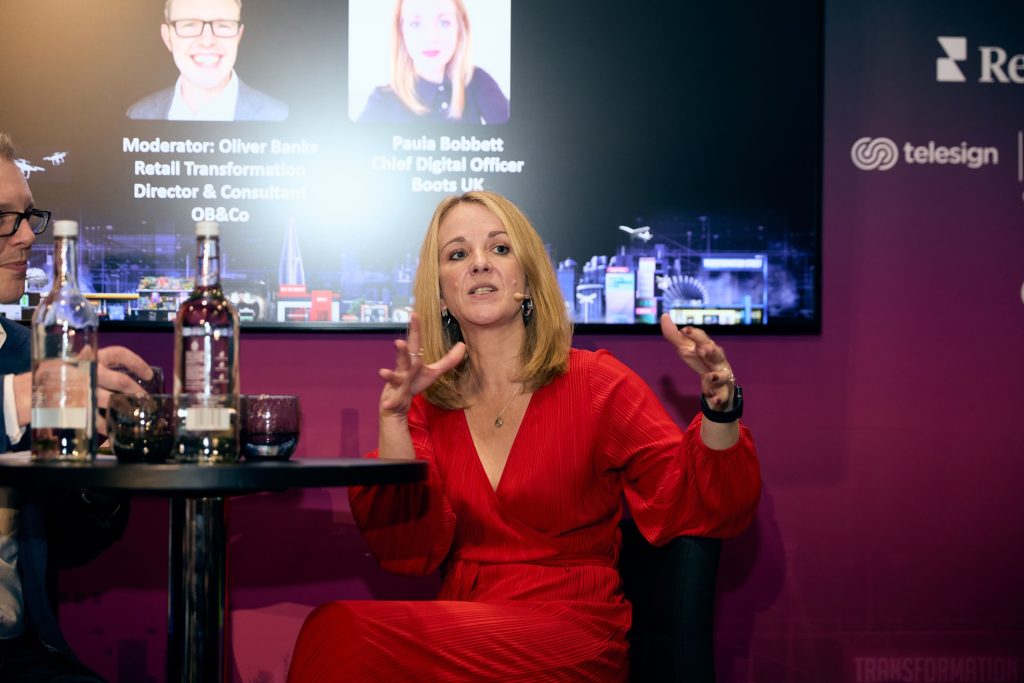
Beneath the bright lights of the main stage at DTX London last week, Derren Brown took a break from hypnotising people into robbing banks and playing Russian roulette in Jersey to tell the CIOs to behave. In short, said Brown, they might learn a thing or two from the Stoics. Rather than signing up to the power of positive thinking, they should instead see life as essentially unpredictable – one where challenges might be met, but never done away with completely. “Do the best you can,” said Brown, “but don’t commit yourself emotionally to an outcome because the outcome has nothing to do with you.”
This was, one salesperson who shall remain anonymous told Tech Monitor, a probably “bit hippie” for some of the crowd at DTX London (quite how Marcus Aurelius would have reacted to that appellation should be left unsaid.) But it remains the case that some of the best events on day one of the conference showed these principles in action – in other words, CIOs, CDOs and other senior leaders explaining how they unemotionally assessed what they might do to improve their organisation’s tech stack, where they couldn’t, and made positive changes where they could without courting hype.

Boots’ ‘monster’ IT stack
Such was the case of Boot’s chief digital officer, Paula Bobbett. As she explained to the large crowd gathered to hear her speak at the CX stage, Bobbett’s appointment to her role in 2022 saw her confront a creaking legacy stack at the retail pharmacy and few reliable means to reach its customers online. “I used to call it Frankenstein’s monster,” she said, recalling those early days.
It took a great deal of time, investment and sheer hard graft on the back end of the Boots app before that situation was turned around. Now, Bobbett was proud to announce, 40% of all online sales were sourced through the application – up from 10% before the pandemic.
Not that the journey is over. It now seems that Bobbett has stoked an appetite among Boots’ senior leadership for perpetual digital transformation. “My boss would say, ‘The website was bad and it’s now average; how do we get it to ‘good’ from there?’” said Bobbett. It doesn’t seem quite enough that Boots has gone from an overwhelming reliance on in-person sales to being able to go toe-to-toe with the most formidable of online retailers. Rather, she added, “We are looking at everything – and starting again.”

Continuous reinvention
This theme of continuous reinvention was developed further on the main stage by our own Jon Berstein, with our associate editor grilling industry leaders on how their firms had managed to keep their digital businesses equipped to meet new challenges, known or otherwise. The most inventive outlets, said Ethos Consulting’s Christelle Heikilla, embrace their strengths and plan digital expansion carefully, rather than blindly embracing the latest and greatest technological innovation.
“I used to work for Sainsbury’s,” said Heikilla. “I’m sure they’re not thinking of getting rid of all their shops overnight just because we now have artificial intelligence. But they definitely will be thinking, ‘How do we do things better behind the scenes and, actually, in our shops, to sell more of our products?’”
That’s much easier said than done, added the Body Shop’s CTO, Udai Kiran Chilamkurthi. Much of the drama surrounding technology adoption inside a major business, explained Chilamkurthi, involves balancing the lure of innovation against revenue protection – which, in turn, requires a ruthless judgement on how this or that software program might actually lead to the business gaining an edge against its competitors. AI is one huge example, he added, where CTOs had to be very careful in not being seduced by the hype. “We have heard so many things about AI,” said Chilamkurthi, “but if I just look at adoption, it is so little and so slow.”
There’s a fine line, however, between caution and paralysis. With so many CIOs rooted to the spot, unable to move for all the choice of AI platforms they could possibly harness at great cost or benefit to their business, some companies are choosing to do away with the role altogether and appoint CDIOs, or ‘chief digital information officers’. That, PwC’s chief of cloud and digital Warren Tucker told the audience, is where “they’re glueing together the responsibilities for harnessing technology at the board room table to help catalyse new ideas and think about how technology is leading the charge on innovation, not lagging.”
Shattered glass
This was less of a concern for Liam Cadd when he was appointed Sky’s digital director for strategy, portfolio and design. As he told a packed-out crowd from the Digital & IT Strategies stage, his priority was contending with the media giant’s faltering IT stack behind the scenes. “We had a website that had 25-second load times,” recalled Cadd. “We had 16-20% error rates across the sites and crash rates on our app at 25%. So, why would we be looking at new technologies and reinventing ourselves when, actually, we couldn’t get the basics right.”
It took two years of hard graft and a nuanced lobbying campaign of senior leaders at Sky before Cadd would knock the organisation’s stack back into shape. Some early wins, like speeding up those atrocious load times and seeing an increase in deal turnarounds on the back of that improvement, were crucial in obtaining buy-in from the board to Cadd’s larger ambitions. The growing accumulation of data points from these actions also created a wellspring of evidence for new investments in digital.
“There was a lot that was done in the organisation that was done on instinct and probably executive direction rather than actually thinking necessarily about the detail in the data,” said Cadd. Overcoming that trust-your-gut mentality required time and not a little work to improve the back-end analysis of the data using machine learning solutions. This did not involve ignoring the institutional memory within the organisation, Cadd was quick to add. “We have a huge amount of amazing talent at Sky,” he said, “but there are people that have been there for 20 or 30 years.”
Marrying their institutional nous with the data proved essential in Sky’s back-end digital transformation, said Cadd. Some product rollouts stemming from this approach were admittedly challenging. The public reception for Sky Glass, for example, was somewhat restrained by reports of bugs in its augmented reality system (“Why is there a brick floating in my living room?” Cadd recalled one of the product test teams reporting back to him.) Not that Sky’s digital director was put off, insofar as Sky Glass was always designed as a platform to roll out new innovations in audiovisual media for its customers. “Obviously,” said Cadd, “it’s continuing to get better over time.”
This, of course, was a return to the thread running through all the talks Tech Monitor attended at DTX London: that a successful digital transformation isn’t an event that begins and ends, but a process of constant, iterative innovation. That might not be as exciting as the immense risk and reward implicit in much of the current hype around AI and other new technologies that have emerged in recent years – but rare are the histories of companies that make a big, dramatic bet on this or that platform and live to tell the tale.
Put another way, perhaps CIOs would be better advised to seek succour from the smaller wins than the bigger victories. “Maybe the end of the journey,” said Brown, “is just like taking your coat off at the end of a long trip and putting your bags down. It’s not necessarily the reward – it’s just the relief at the end.”
DTX London was held between October 2nd and 3rd at the ExCel Centre, London.






